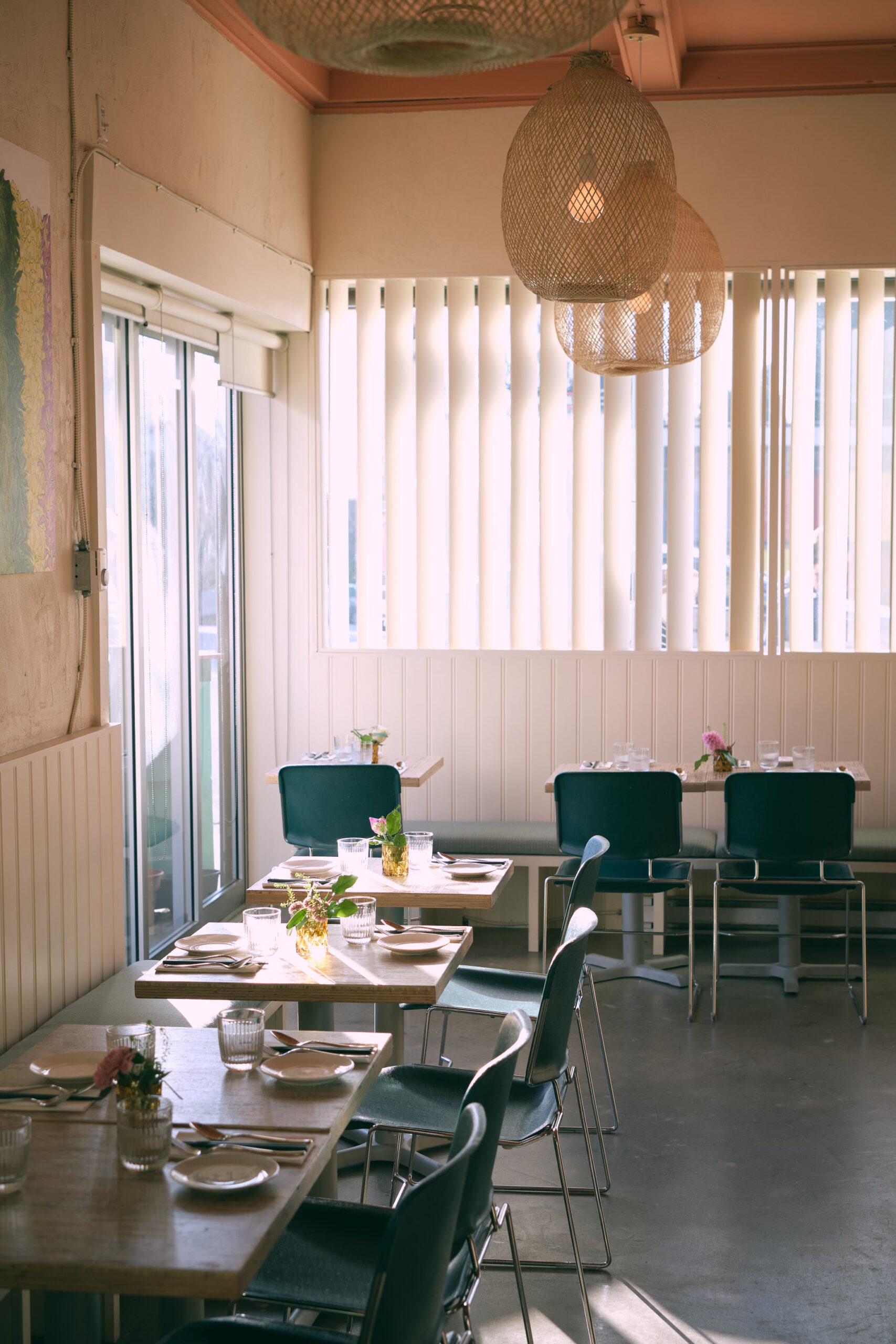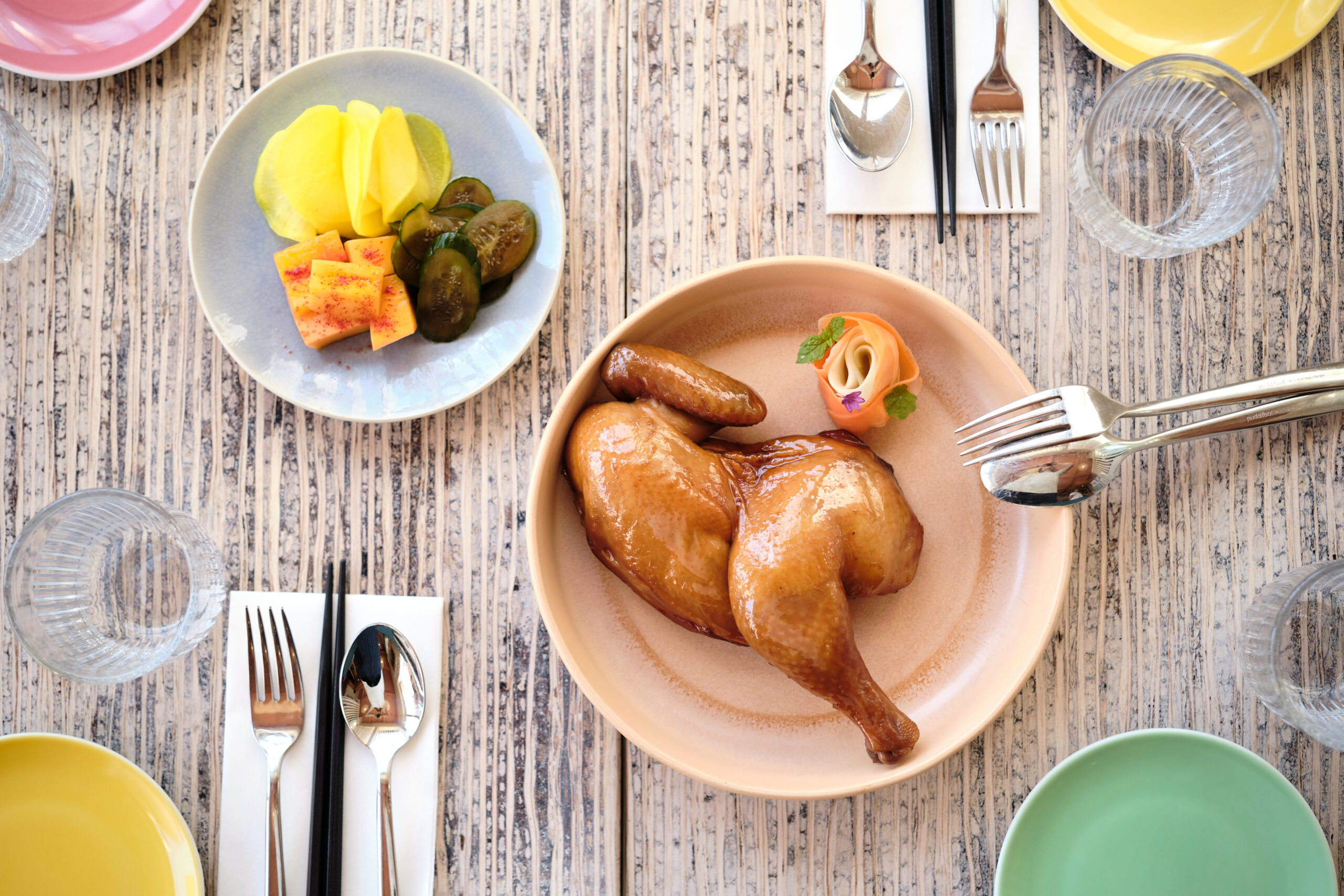Vancouver’s Hānai Is the Changing Face of Dining in Canada
The menu that made one writer fall in love with food again.

Writing about food means eating lots of it. While this might sound like a dream job, it’s not without its drawbacks. For every perfectly rare steak, there is an equal but opposite hunk of dry and dreary pork. But worst of all is the monotony, no way the fault of individual restaurants but rather our dining culture, which favours certain cuisines (French, Italian, Japanese) and service styles (à la carte, family style, multicourse tasting menus. The best part about eating for work? The ecstasy of experiencing something truly new in a sea of margherita pizzas and derivative foie gras—an experience I had recently at Vancouver’s Hānai.
A joint venture between chef-owner Tess Bevernage, her life and work partner Tom Robillard, and duo Miki Ellis and Stephen Whiteside of Dachi and Elephant fame, the Commercial Drive restaurant recently launched its hybrid tasting/family-style ohana menu. An homage to the meals Bevernage and Robillard enjoyed growing up on O‘ahu, there is nothing else like it in Vancouver.



The first course—a generous bowl of boiled peanuts spiced with ginger and star anise—is a simple if somewhat unglamorous introduction to the ohana experience. But what it lacks in sexiness it makes up for in fun. As I crack open my first peanut, our server slows his frenetic rhythm and warns me to watch out for the splash likely to come out of the husk when split. Thankful, I continue and enjoy the almost chai-tea-like liquid that emerges from the cracked nuts, perhaps the most unique amuse bouche I’ve ever warmed my palate up with and a stark reminder not to wear white to work.


The following two courses, “beach snacks” and salads, feature small plates of Hawaiian dishes that seemed to express much of what Vancouver’s Pacific Northwest dining culture is all about. These courses are also where the tasting and family-style fusion of the menu comes into clear relief. The “beach snacks”—pickled vegetables, candied anchovies, kimchi dip with wonton crackers, and taegu-seasoned cuttlefish—came in small portions begging to be picked up with fingers tapas fashion. The salads most obviously incorporated the Asian flavours Hawai‘i is also known for, ones likely pleasantly familiar to veterans of Vancouver’s food scene. Both the halibut cheek salad and the somen noodle salad employ traditional Japanese ingredients (wakame, kamaboko) alongside traditional Hawaiian ones (Spam).




The meaty zenith of the ohana menu, kālua pork and huli huli chicken in my case (the menu is apt to change with the seasons), is food enough for an entire lū‘au, although the hospitable Hānai team swear it’s for two. The huli huli chicken is the undoubted standout of the menu. Arriving aglow with its sweet shoyu glaze, the dish’s almost cartoony aesthetic perfection is rivalled only by the sublimity of its preparation. It’s the type of dish that exemplifies why Hānai’s ohana menu is totally different from the stuffy tasting menu you’re used to.


Like the inimitable food on Hānai’s ohana menu, the drinks also veer from the stuffy wine pairings that traditionally accompany a tasting menu. A boozy slushy matches the boiled peanuts; a Sunday in August’s cult-classic pinot gris is blushed just enough to dance with both the meat and vegetable components of the salad course; and a shizenshu junmai genshu sake from the 300-year-old Niida Honke sake brewery is viscous enough to stand up to the sweetly glazed chicken and pork while further contributing umami tertiary notes. These are all perfect accompaniments for the menu that defines the changing face of dining in Canada—where, what, and how you eat are an island apart from the rest of world cuisine. Just like Hawai‘i is.




